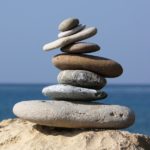Science is everywhere! It is in the water you boil, the food you cook, hidden in the grass, floating in the pond, laying under a rock, or flying. What makes science special is that it sparks kids’ curiosity and imaginations, and it can launch an ‘unschool’ day, or be the break you need from the daily routine. Introducing observation science teaches critical thinking and exploration skills. Creating a science center or discovery area actively involves students in their own education. Your object: Create a science center for all ages!
Do I Need a School Room or Dedicated Area for a Science Center?
NO! That is the cool part. A science center can range from a bowl of acorns on a table to a work bench outdoors. The object is to encourage kids to explore, collect, ask questions, and ultimately research for more information.
Watch kids roam and pick up items. You will find that every kid is a natural collector. They will turn a fascinating object around, look closely at the details, and sometimes do the shake test. Provide them with a special collections bag to carry their treasures. At home, you can go over each in detail and look up videos or get informative books.
I know it is difficult to watch collections take over, however, if accumulation bothers you, help your children plan some sort of organization method. Don’t be so quick to ‘dump’ what you feel is worthless. Kids need a place to let their minds wander. There is nothing worse than coming home and finding a collection of favorite objects missing.
Camp Treasures
Andrew started his own science box collections on his first year of summer camp. Every day he came home and added trinkets and objects of interest that he found. I dated and contained his finds to small boxes and now they are nice memories for him. As I look at his collections over the last 6 years, he has definitely grown more savvy in what he collects.
Our Homeschool Science Center
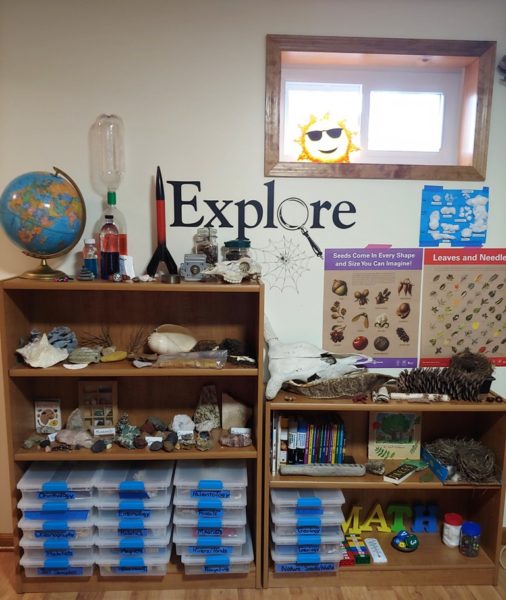
Our science area has evolved over the years. I have always been a collector so having boxes of rocks and seashells from around the world, skeletons, or artifacts, is common in our household. As I got into homeschooling and teaching science, keeping collections became a necessity, and better yet, a justification.
Currently we are studying geology, oceanography and gymnosperms. Andrew has his own side-gig and is interested in all things ornithology (birds). I have rocks, sea-related items, and treasures from the woods displayed. I won’t lie, it is nice to to have immediate access to the items I want to incorporate into our lessons.
Andrew’s Additions
Andrew also adds his finds to our science area as well. A Wren’s nest with 9 speckled eggs is Andrew’s most recent addition. We found momma bird dead near her nest – the cat has never fessed up, but we have our suspicions. We observed the nest for days to make sure it remained unattended. When we knew for sure that momma was not sitting on the eggs, we removed the nest. We spent an entire morning examining the woven content, discovering what it was made from and how it was created. This little nest started Andrew off on a birding fascination. He has collected 8 types of abandoned nests thus far. They are all sizes, depth and made from different materials and are true engineering feats!
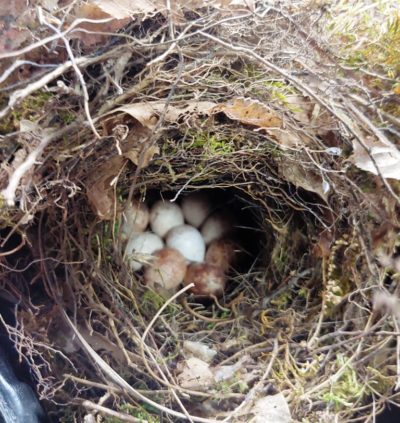
A Close-up of our Shelves
The Sugar Pinecone is the largest cone in the conifer realm and holds prime real estate on the top shelf. Next to it, Andrew added birch bark found up-north, as well as an abandoned wasp nest.
The rattle snake skin and rattle was from a dissection we did for a Biology requirement. I took it into class first so my students could see a Rattlesnake up close. We kept the skin, which is a bit twisted. I figured dissecting was enough, pinning and drying the skin was a bit more than I could handle. I don’t mind snakes if I know where they are, but I do not like to be surprised. This was the first snake I have handled and even though I knew it was dead, my anxiety level had to be contained. However, after the dissection, I must say that I have a new respect for these lowly, belly crawling creatures. Their bodies are extremely interesting and compact on the inside.
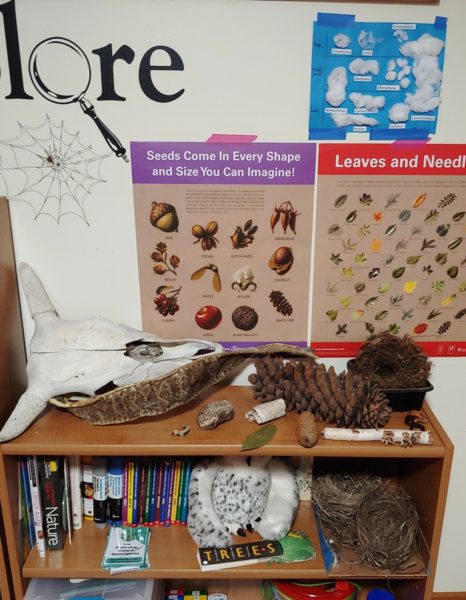
One can’t miss the large yak skull found in Mongolia. Dragging that back was a story all by itself. I wasn’t sure Chinese customs was going to allow it to transit through Beijing to the USA. It was a rather big production and I wasn’t letting it go without a fight. Knowing that the Chinese value education, I finally got the wise idea and told them I needed it for science class. That statement got Mr. Yak through the lines without immigration papers!
Organizing our Science Exploration Area
As our collections grew over the years, I purchased stackable 8.5 X 11 Sterilite containers to organize our science area. I love these containers and use them for everything from collections to art work. Here’s a peek inside our robotics bin. It has everything needed to build robots.
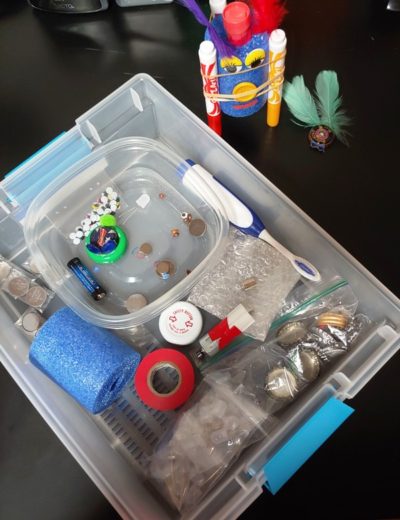
Rules to Collecting
All budding scientists should follow strict collection rules when creating their own science center. Collect spent and abandoned items only. Spent refers to items that are no longer productive or growing. Some conifer cones can stay on a tree for 40 years! Pick from the ground not from the tree!
It is important to know the rules before you pick up anything to transport home. Collecting at national and state parks, as well as many local parks is almost always forbidden. Most importantly, if you find Native American artifacts on public lands, take a picture, then call the park ranger or officer on duty. It is illegal to collect artifacts from protected areas and if discovered, curiosity and desire could lead to jail time. Always respect nature and laws!
My Latest Find
I was rock hunting and suddenly came across this beautiful egg on Easter day. (How appropriate!) I was surprised to discover that it was not the plastic egg that I expected. Instead, it is a large 7 centimeter, pinkish-tan tinted egg with several hairline cracks. Perhaps it washed out of the nest during a recent flash flood? I know the river area well enough to know that the does not belong on this sand bar, nor did it fall from a nearby tree.
Since I am not familiar with what kind of egg this is yet, I will contact the local DNR office. The measurement of this new find, consequently measures the size of an eagle egg, and since there happens to be an Eagle nest up river, I would prefer to know that I am collecting something legal. If allowed, it will join our abandoned egg collection in our science center. * Did I mention that science is everywhere?
*It is illegal to own any Eagle-related item.
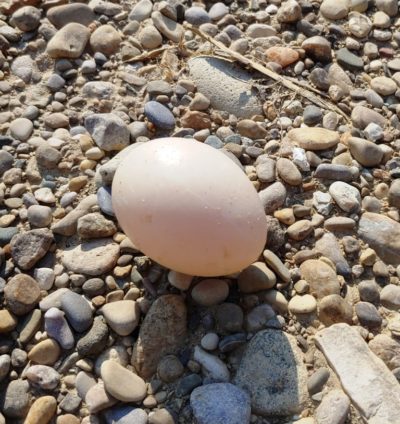
You can expect a future posts on keeping and storing science collections, our snake dissection, as well as Andrew’s post on how to make a $1.00 robot.
Want to stay up-to-date with the latest? Become one of our subscribers!
